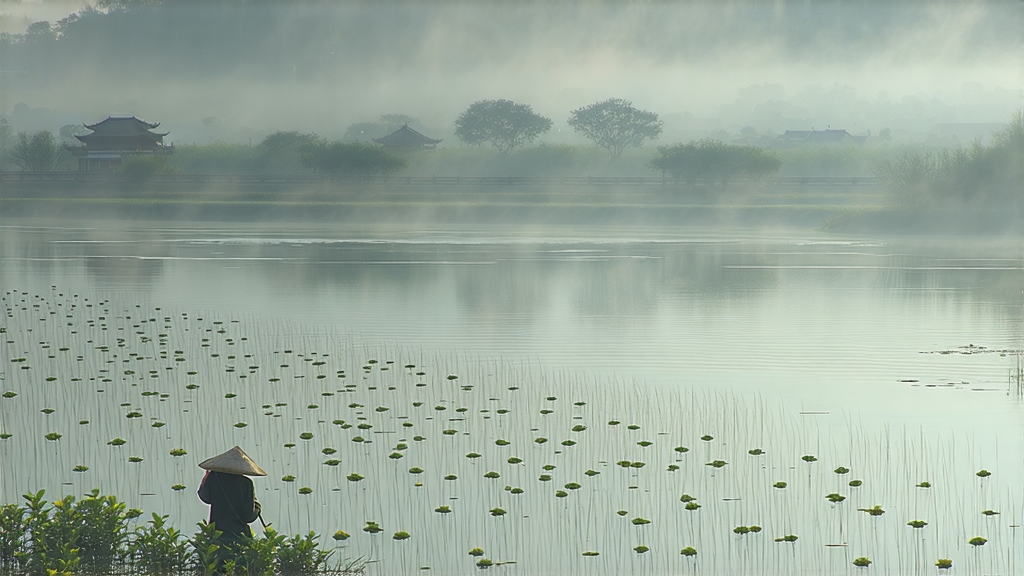
Biluochun, whose name literally means “Green Snail Spring,” is one of China’s ten most celebrated teas, yet it remains a quiet jewel outside the circles of devoted tea lovers. Grown on the mist-lapped peninsulas of Lake Tai in Jiangsu province, this micro-rolled green tea carries the fragrance of apricot blossoms and the minerality of submerged limestone, a sensory postcard of its terroir. To understand Biluochun is to listen to a 1,200-year-old dialogue between monks, emperors, horticulturists and the lake itself; it is also to master a brewing discipline that rewards patience with a cup that tastes like early morning in May.
Historical whispers
The first written record appears during the Tang dynasty, when the poet-official Bai Juyi mentioned “Xia Sha Ren Xiang” (“startling fragrance”), the tea’s earlier name. Legend says a tea picker tucked fresh leaves between her breasts to free her hands; body warmth released such an intense aroma that local monks asked for the secret. By the Kangxi era (1661-1722) the emperor—touring the south and finding the name vulgar—renamed it Biluochun for its snail-shell curve and spring harvest. Imperial patronage lifted the tea into tribute status; 300 mu of the best groves were fenced off, their harvest rushed by horse and canal barge to Beijing within seven days.
Micro-terroir: one lake, two mountains, three fragrances
Authentic Biluochun comes only from Dongting Dongshan and Xishan, two limestone islands that poke into Lake Tai like inverted lotus petals. The water body regulates temperature, creating nightly fogs that scatter sunlight into soft, diffused rays. Tea bushes are interplanted with loquat, plum, tangerine and peach trees; the blossoms bloom in April, the same moment the tea flushes, so bees shuttle between petals and leaf, imprinting floral volatiles on the nascent buds. Farmers speak of “three fragrances in one leaf”: the fruit blossom, the lake water, and the rocky soil. Anything grown beyond these 17 square kilometers is politely called “Suzhou green” rather than Biluochun.
Cultivars: the old, the new, and the guarded
The heirloom cultivar is Dongting Small-Leaf #1, a landrace with tiny oval leaves that point upward like praying hands. It yields only 250 kg per mu but possesses the highest concentration of cis-jasmone and linalool, the molecules behind Biluochun’s signature orchid note. Since 1982 agronomists have released clones such as 79-3-7 and 83-1-5, which resist cold and double yield, yet purists claim they lack the lingering “rock rhyme” aftertaste. On the islands every household keeps a few “mother trees” from the Qing period; cuttings are bartered like family heirlooms, and scion wood is never sold to outsiders.
Plucking ritual: dawn, dew and one-bud-one-leaf
Harvest begins when the lake thermometer hits 12 °C for three consecutive nights, usually between the Qingming and Grain Rain solar terms. Pickers—mostly women who inherit finger techniques from their grandmothers—start at 5 a.m. while dew still beads the buds. The standard is one unopened bud clasped by a single just-unfurled leaf, 1.5–2 cm in length, weighing 0.12 g. A seasoned picker gathers 600 g of fresh leaf in four hours; it takes 55,000 such snippets to make 500 g of finished tea. Leaves are placed in shallow bamboo “qinglong” baskets lined with banana leaf to prevent bruising; the baskets never exceed 2 kg so that pressure does not ignite premature oxidation.
Crafting the spiral: killing green, rolling and showing the down
Within 30 minutes of plucking the leaves arrive at the village workshop, a stone cottage whose windows are sealed with black cloth to soften the light. The master, called the “qingtou” (green head), judges moisture by pressing a handful against his cheek; the leaf must feel like wet silk without dripping. Firing happens in four stages:
- Gao-huo shaqing (high-heat kill-green): A wok is heated to 180 °C, then brushed with winter pear pulp to season the surface. The craftsman tosses 250 g of leaf in rhythmic half-circles for 3–4 minutes, using only his bare fingers; calloused skin is the best thermometer. The goal is to halt pol